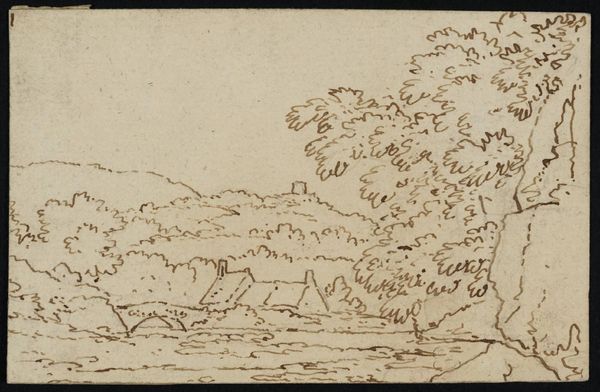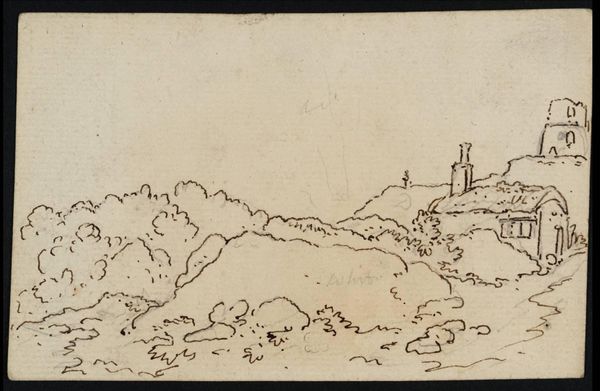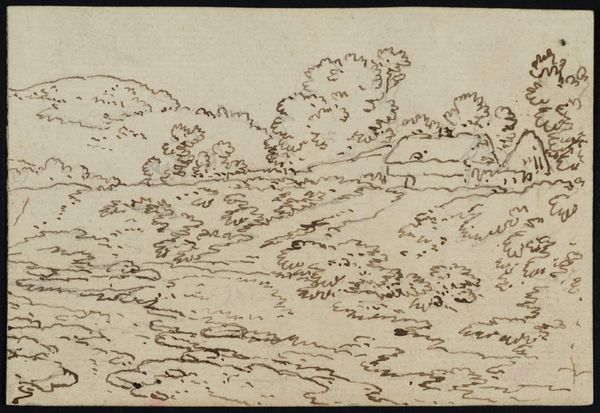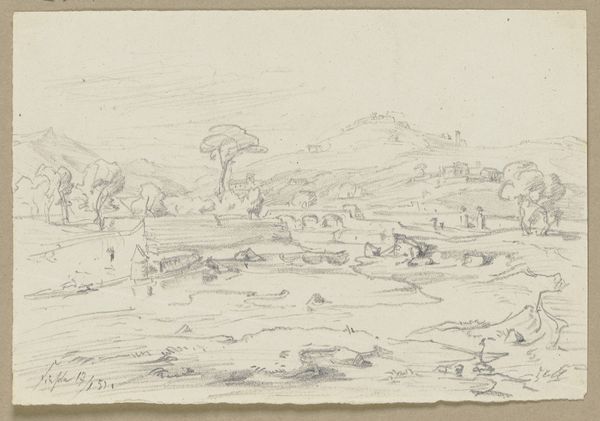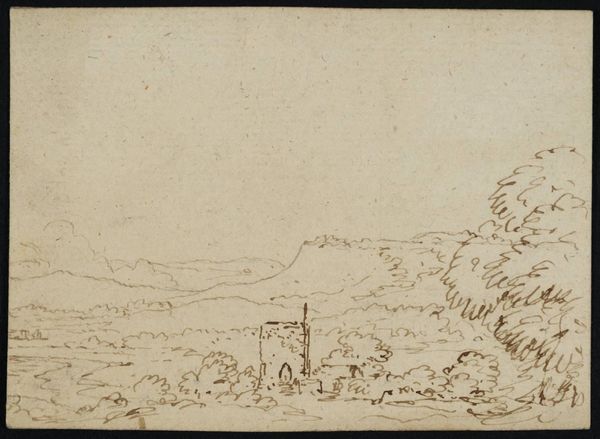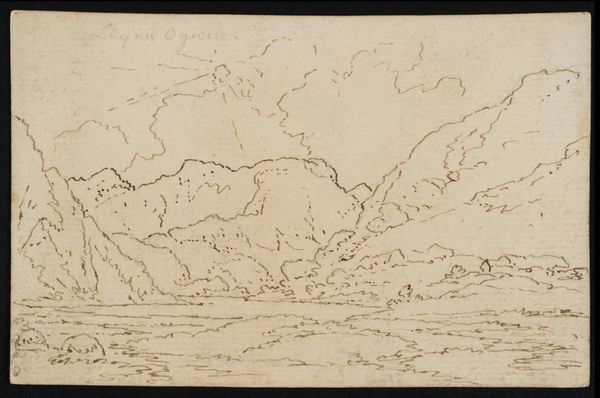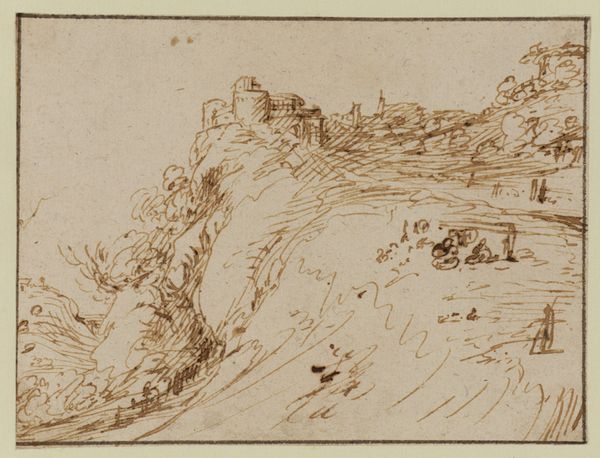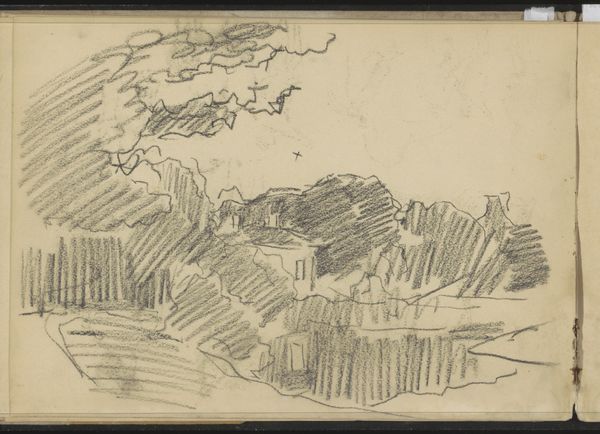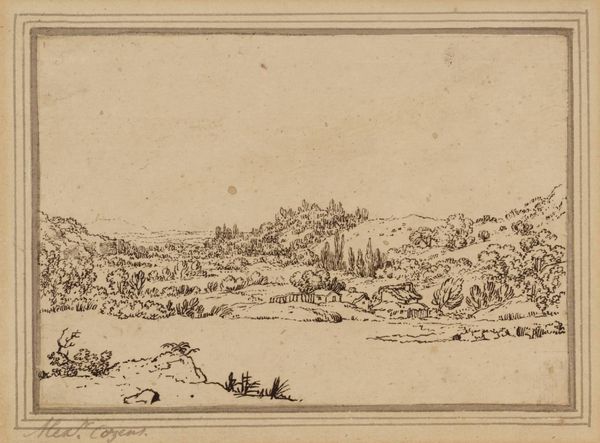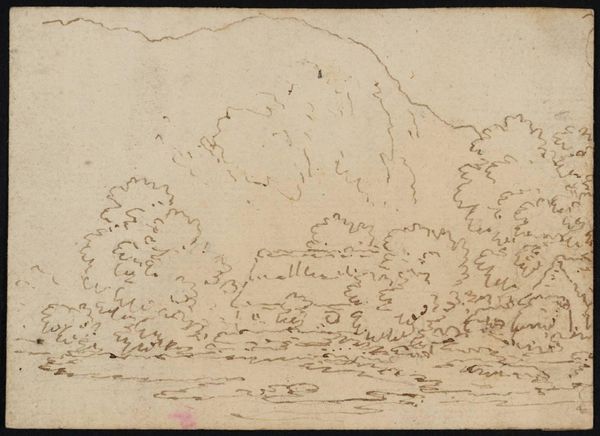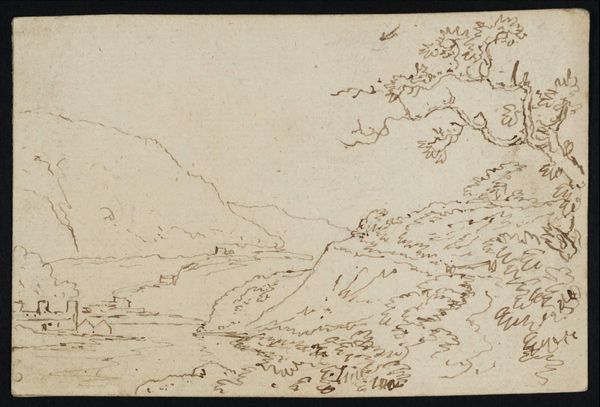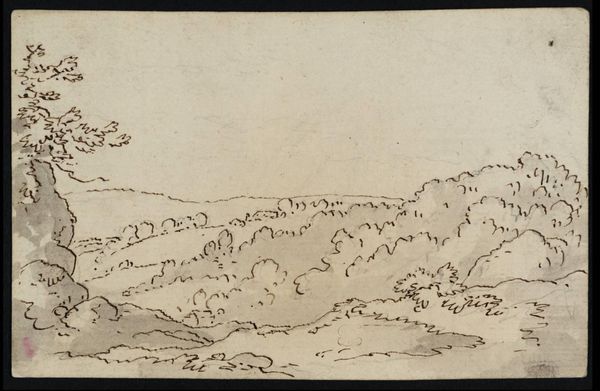
The River Dee at Llangollen, with Hills Beyond; Looking West c. 1786 - 1800
0:00
0:00
Dimensions: support: 79 x 118 mm
Copyright: CC-BY-NC-ND 4.0 DEED, Photo: Tate
Curator: Philip James De Loutherbourg, born in 1740, captured this view in "The River Dee at Llangollen, with Hills Beyond; Looking West." What do you think of this quick sketch? Editor: There's a rawness to it, isn't there? It almost feels like a hurried observation, a capturing of the landscape's essence with minimal strokes. Curator: Indeed. De Loutherbourg's landscapes often spoke to the socio-political climate, particularly around land use and the picturesque movement. Editor: You know, focusing on the material aspects, it's fascinating how a simple pen and ink on this small support—only 79 by 118 millimeters—can evoke such a sense of place. The labor and the constraints of that labor are really clear. Curator: Precisely. The scale emphasizes the artist’s subjective vision, drawing us into the romantic idealization of nature that dominated the era. But, I think it also hints at a looming industrial presence, subtly questioning that very ideal. Editor: I agree, there’s something about the economy of line that speaks to broader issues of resource allocation and artistic production. It's both simple and surprisingly complex. Curator: A potent reminder of how even a sketch can be imbued with layers of meaning. Editor: Absolutely. It highlights the power of art to engage with both the material world and its cultural narratives.
